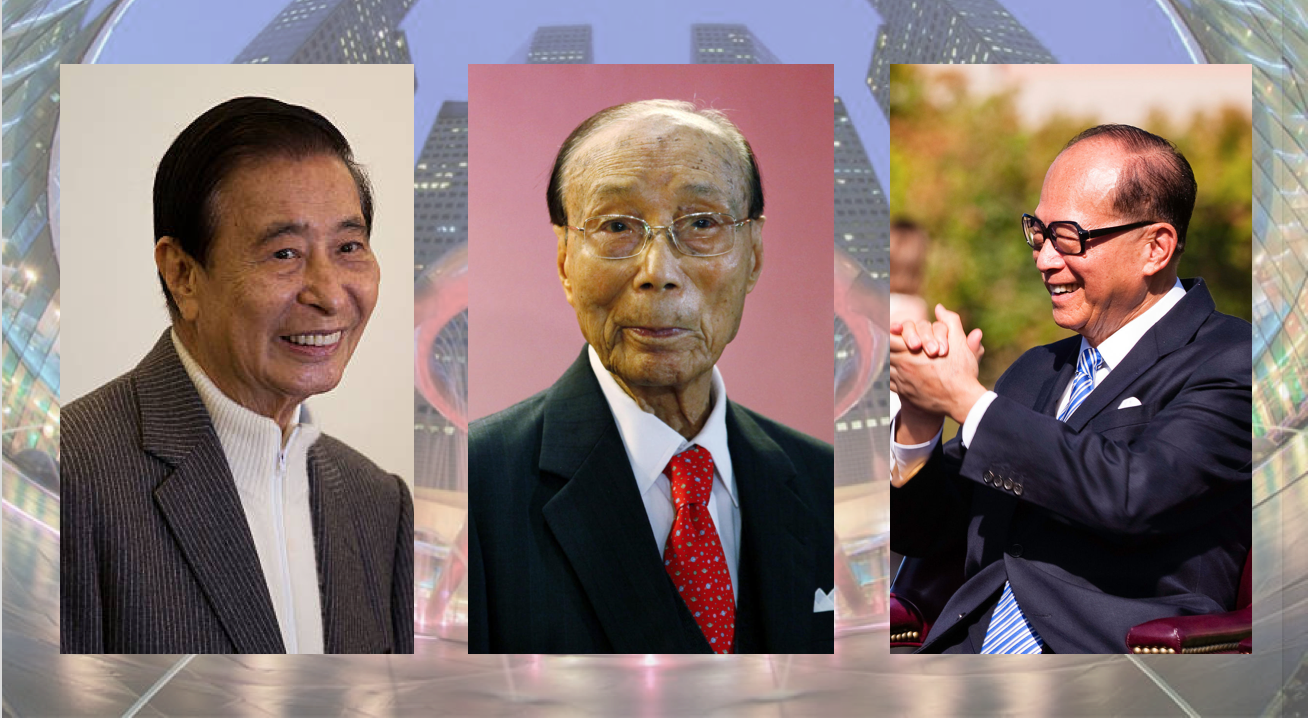Spanning 82,498m2 of retail space, Suntec City is one of the largest shopping and entertainment centres in Singapore.
It opened in the mid-1990s, but the foundations of the project were laid as early as 1984.
Commissioned and built by a private consortium that eventually forked out a total of US$2.3 billion (about S$3 billion), the investors behind the project were a group of Hong Kong businessmen.
LKY wooed HK businessmen
Then-Prime Minister Lee Kuan Yew had a hand in laying the groundwork for this investment.
In 1984, he invited a diverse spread of Hong Kong businessmen and professionals to attend our National Day celebrations.
A year later in 1985, several of these investors returned to Singapore for a briefing and seminar conducted by Lee's Principal Private Secretary, as well as the Economic Development Board Hong Kong Centre Director.
His goal to attract long-term investors to expand their businesses in Singapore eventually paid off with the formation of the Suntec Group in 1985.
Political climate in Hong Kong
Robert Wang, a lawyer-turned-businessman, gave an insider look into the world of Hong Kong tycoons in his book Walking the Tycoon's Rope.
In the 1980s, Hong Kong was facing a serious issue. Despite a booming economy, many people were worried about the city's impending handover to China in 1997.
Many feared that the transition from British rule to Chinese rule may not be a peaceful one.
The uncertainty meant that many of Hong Kong's most influential people contemplated finding a suitable country to immigrate to.
Singapore, with its stability and proximity to Hong Kong, was seen as one of these countries.
Regarding the political climate in Hong Kong and Singapore's efforts in attracting Hong Kong businessmen to invest in Singapore, Lee Kuan Yew also remarked:
"Their media believed Singapore wanted to cream off its talent, but it was in our interests to have Hong Kong succeed after it returned to Chinese sovereignty. To raid and deplete Hong Kong of talent is a one-off exercise. A thriving Hong Kong will be a continuing source of business and profits."
Investment came after 1985 recession
Singapore experienced her first post-independence recession in 1985. There was not only negative growth, but many developers were also postponing their new investments.
Despite this period of great economic uncertainty, the Suntec Group committed themselves by purchasing a Urban Redevelopment Authority site by public tender in 1988.
They also undertook to invest $1.2 billion for an exhibition and convention centre, five tower blocks and a retail and entertainment podium.
So who were those investors?
The Suntec Group comprised a group of 21 shareholders who collectively held 40 percent of Hong Kong's market capitalisation.
Their interests and expertise ranged from shipping, property, infrastructure development, hotel, manufacturing industries, telecommunication services, TV, broadcasting, to entertainment.
Li Ka-shing (Pictured right)
Li Ka-shing is the chairman of the board for CK Hutchison Holdings, and currently the richest man in Hong Kong, with a net worth of $34.2 billion.
He is nicknamed "Superman" for his keen business acumen and his overwhelming influence in Hong Kong.
In 2002, the Li Ka Shing library at Singapore Management University was named in his honour after a US$11.5 million donation.
Lee Shau-kee (Pictured left)
Lee Shau-kee is the majority owner of Henderson Land Development, a property conglomerate with interests in properties, hotels, restaurants and internet services.
He has a net worth of US$30.5 billion and is the second richest person in Hong Kong.
He has made substantial profits from mainland China-controlled stocks and is known as "Hong Kong's Warren Buffet" for his investment skills.
Run Run Shaw (Pictured in middle)
Run Run Shaw was a Hong Kong entertainment mogul and the one of the most influential figures in the Asian entertainment industry.
He founded Shaw Brothers Studios, one of the largest film production companies in Hong Kong, as well as TVB, the dominant Television company in Hong Kong.
He was also one of the founders of Shaw Organisation in Singapore, alongside his brother Runme Shaw. He passed away in 2014.
Scheme for eminent entrepreneurs
In Wang's book, he also described his interactions with eminent Singaporean leaders, such as Lee Kuan Yew and Goh Keng Swee.
Wang claimed that he submitted a proposal to Lee Kuan Yew. It involved a scheme for the eminent entrepreneurs of Hong Kong, modelled after a previous scheme for lawyers.
[related_story]
The proposal was well-received by Lee Kuan Yew, and it subsequently gave birth to the Corporate Special Holding Status Scheme (CSHS).
This scheme allowed an approved entrepreneur to nominate one person for permanent residence in Singapore, for each S$1 million he invested.
Due to the unstable political climate in Hong Kong then, it is believed that the scheme was attractive to eminent Hong Kongers.
But it is unclear how many of the entrepreneurs took up the scheme, nor is it clear how many eventually took up permanent residence in Singapore.
Top photo from Suntec City Facebook. Photos of tycoons via Wikipedia, Getty and here
If you like what you read, follow us on Facebook, Instagram, Twitter and Telegram to get the latest updates.
